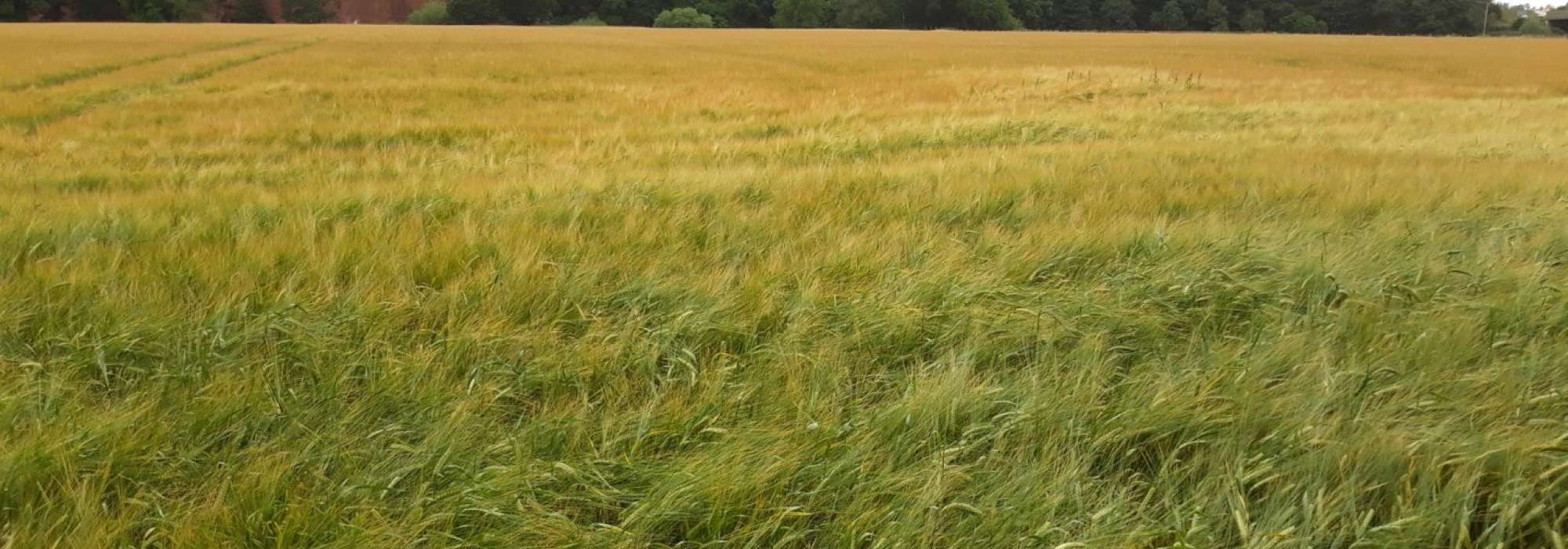Government Updates to ELMS Offers Good New Year News for Farmers and Landowners
DEFRA have today updated the Agricultural Transition Plan for farming support in England. This announcement sets out how the Government plans to enhance the suite of Environmental Land Management schemes during 2024. Much of the detail will not be announced until the upgraded schemes are launched in the summer, but there are some key messages in today’s statements.
- Payments will be increased by an average of 10% across Sustainable Farming Incentive (SFI) and Countryside Stewardship (CS) schemes; this applies to all existing agreement holders with effect from 1st January 2024.
- 50 new actions will be launched in the summer (see below).
- SFI and Mid Tier Countryside Stewardship are effectively being combined, such that farmers can make a single application for both schemes. (Higher Tier CS will remain a separate scheme.)
- The current duplication of options and actions between the two schemes will be removed.
- Existing SFI 2023 agreement holders will be able to take advantage of the new actions by either adding them to their existing agreement at the anniversary or making a separate application to run alongside their current SFI.
- Once the scheme is re-launched in the summer, it will operate under a rolling application window; there will no longer be tight deadlines by which applications have to be submitted and agreements will start on 1st of the following month, as and when they have been processed.
These changes will be most welcomed by farmers and agents alike. DEFRA are clearly trying to make the schemes simpler, more flexible and less prescriptive, which should encourage more farmers to apply. The rolling application window is especially welcome; it should mean more applications can be submitted than before and the Rural Payments Agency will be able to process them more efficiently.
There are new actions that will potentially benefit all farming sectors, including:
|
Action |
Payment per ha |
|
No-till crop establishment |
£73 |
|
Multi-species cover crop outside winter |
£153 |
|
Precision farming – variable rate nutrient application |
£27 |
|
Remote sensor guided herbicide spraying |
£43 |
|
Robotic mechanical weeding |
£150 |
|
Managing species-rich floodplain meadows |
£1,070 |
|
Low grazing levels on moorland |
Up to £66 |
|
Cattle & ponies on moorland |
Up to £23 |
|
Manage non-peat moorland for flood resilience (slow the flow) |
£160 |
|
Native woodland management supplement |
£116 |
|
Manage historic features in woodland |
£943 |
|
High density agro-forestry |
£849 |
|
Medium density agro-forestry |
£595 |
|
Low density agro-forestry |
£385 |
|
Very low density agro-forestry |
£248 |
|
Manage grassland for flood resilience |
£938 |
|
Connect rivers to floodplain habitats |
£1,242 |
|
Manage riparian habitats |
£1,186 |
|
Maintenance of dry stone walls |
£27 per 100 m |
|
Management of ditches |
£4 per 100 m |
|
Open access |
£92 |
|
Permissive footpaths |
£77 per 100 m |
|
Permissive bridleways |
£158 per 100 m |
The new moorland options are likely to be of interest to many farmers and commoners in northern England. “Low” grazing levels will pay between £20 and £66 per ha, depending on stocking density. If moorland is grazed with a certain proportion of cattle or ponies, this will attract and extra payment of up to £23 per ha. There will also be additional payments of up to £50 per ha to take livestock off moorland at certain times of the year to prevent potential damage to sensitive habitats. While these options may be superficially attractive, especially in relation to old HLS agreement payment rates, it will be necessary to see the detail of how stocking density and payments are related. The current CS Higher Tier option remains at £55 per ha.
Also of interest to upland farmers will be the new action for maintenance of dry stone walls. Maintenance of walls has long been neglected by Countryside Stewardship, with the only grants available being to restore walls that were already in a poor state. While the payment rate of £27 per 100 metres is not especially high, it is certainly better than nothing and will help upland farmers maintain these vital features of the upland landscape.
There are new payments for access to farmland, which has not been available since 2015. Open access will attract a payment of £92 per ha, while the creation of permissive footpaths will pay £77 per 100 metres and £158 per 100 metres bridleways.
Many options will see increased payment rates, but the 10% increase does not apply to everything. Some options will see a much larger increase, while some options will see no change at all. For example, managing a species-rich hay meadow would previously have attracted a payment of £219 per ha in total but that now rises to £803, an increase of 267%! However, the Native Breed at Risk Supplement falls from £167 per ha to £92 or £146 per ha, depending on livestock numbers.
Disappointingly for upland farmers, the payment for Rough Grazing for Birds remains at £121 per ha. Low input grassland management at £151 per ha is now likely to be the default choice for rough pastures, as it is less restrictive and pays more. This is unlikely to have a positive effect on upland breeding wader populations.
Woodland improvement increases to £127 per ha and, for the management of native woodlands, there will be a new supplement available that pays an extra £116 per ha, bringing the total payment to £243 per ha. This is a big improvement on the current rate of £100 per ha. Other new woodland supplements will include management to improve structure and management of historic features in woodland. New agro-forestry actions, under which trees are planted in and around crop and pasture land, will pay between £248 and £849 per ha, depending on the density of planting.
The main changes to the most popular options across SFI, Mid Tier and Higher Tier include:
|
Action |
Old Rate per ha |
New Rate per ha |
|
Flower-rich grass margins |
£673 |
£798 |
|
Pollen & nectar mix |
£614 |
£739 |
|
Bumblebird mix |
£637 |
£747 |
|
Winter bird food |
£732 |
£853 |
|
Whole-crop cereals |
£584 |
£596 |
|
Unharvested cereal headlands |
£822 |
£1,072 |
|
Wet grassland for breeding waders |
£353 |
£676 |
|
Wet grassland for wintering waders |
£217 |
£547 |
|
Species-rich grassland management |
£182 |
£646 |
|
Haymaking supplement |
£37 |
£157 |
|
Creation of scrub |
£149 |
£588 |
|
Native Breeds at Risk Supplement |
£167 |
£146 |
|
Woodland improvement |
£100 |
£127 |
|
Manage intensive grassland next to watercourses |
£207 |
£311 |
|
Making space for rivers to move |
£781 |
£1,489 |
|
12-24 metre watercourse buffer strip |
£612 |
£707 |
|
Management of fen (wetland) |
£35 |
£920 |
|
Management of lowland heath |
£366 |
£412 |
|
Take historic features out of cultivation |
£476 |
£613 |
|
Manage historic features on grassland |
£44 |
£55 |
|
Maintenance of trad farm buildings |
£4.42 per m2 |
£5 per m2 |
|
Maintenance of remote trad farm buildings |
£6.93 per m2 |
£8 per m2 |
|
Educational access |
£318 per visit |
£363 per visit |
Although many payment rates are increasing within SFI and CS, there is no change to old Higher Level Environmental Stewardship (HLS) agreements. Many HLS agreements are in an extension until 2028. However, the uplift in payment rates in Countryside Stewardship means it may now be more advantageous to switch to a new scheme. Provided the new scheme delivers at least the same level of environmental benefits, agreement holders can leave their HLS early to enter a new Higher Tier CS scheme. The HLS would continue to run until the new agreement is up and running. HLS agreement holders need to do their sums to see if it would be worth making the switch sooner rather than later.
If you would like any further advice on any of the rural grants and schemes currently available and upcoming in 2024, please contact your local Land Agency office:
- Carlisle (North Lakes) - 01228 406260 | [email protected]
- Staveley (South Lakes) - 01539 721375 | [email protected]
- Hexham (Northumberland) - [email protected]
- Durham (North East) - 0191 370 8530 | [email protected]
- Northallerton (North Yorkshire) - 01609 710377 | [email protected]

